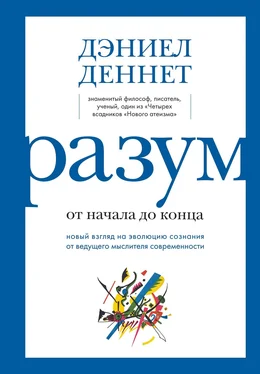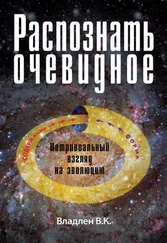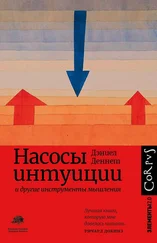Griffiths, Paul, 1995. “The Cronin Controversy.” Brit. J. Phil. Sci. 46: 122–138.
–—. 2008. “Molecular and Developmental Biology.” In The Blackwell Guide to the Philosophy of Science, edited by Peter Machamer and Michael Silverstein, 252–271. Oxford: Blackwell.
Guston, Philip. 2011. Philip Guston: Collected Writings, Lectures, and Conversations, edited by Clark Coolidge. Berkeley, Los Angeles, London: University of California Press.
Haig, David. 1997. “The Social Gene.” Behavioural Ecology: An Evolutionary Approach, edited by John R. Krebs and Nicholas Davies, 284–304. Oxford: Blackwell Science.
–—. 2008. “Conflicting Messages: Genomic Imprinting and Internal Communication.” In Sociobiology of Communication: An Interdisciplinary Perspective, edited by Patrizia D’Ettorre and David P. Hughes, 209–223. Oxford: Oxford University Press.
Halitschke, Rayko, Johan A. Stenberg, Danny Kessler, André Kessler, and Ian T. Baldwin. 2008. “Shared Signals—‘Alarm Calls’ from Plants Increase Apparency to Herbivores and Their Enemies in Nature.” Ecology Letters 11 (1): 24–34.
Hansell, M. H. 2000. Bird Nests and Construction Behaviour. Cambridge: Cambridge University Press.
–—. 2005. Animal Architecture. Oxford: Oxford University Press.
–—. 2007. Built by Animals. Oxford: Oxford University Press.
Hardy, Alister, 1960. “Was Man More Aquatic in the Past?” The New Scientist, 642–645.
Hardy, Thomas. 1960. Selected Poems of Thomas Hardy. London: Macmillan.
Harris, Sam. 2012. Free Will. New York: Free Press.
Harvey, I., P. Husbands, D. Cliff, A. Thompson, and N. Jakobi. 1997. “Evolutionary Robotics: the Sussex Approach.” Robotics and Autonomous Systems 20 (2–4): 205–224.
Haugeland, John. 1985. Artificial Intelligence: The Very Idea. Cambridge, Mass.: MIT Press.
–—. 1998. Having Thought: Essays in the Metaphysics of Mind. Cambridge, Mass.:
Harvard University Press.
Hauser, Marc D. 1996. The Evolution of Communication. Cambridge, Mass.: MIT Press.
Hauser, Marc D., Noam Chomsky, and W. Tecumseh Fitch. 2002. “The Faculty of Language: What Is It, Who Has It, and How Did It Evolve?” Science 298 (5598): 1569–1579.
Heeks, R. J. 2011. “Discovery Writing and the So-called Forster Quote.” April 13. https://rjheeks.wordpress.com/2011/04/13/discovery-writing-and-the-so-called-forster-quote/
Henrich J. 2004. “Demography and Cultural Evolution: Why Adaptive Cultural Processes Produced Maladaptive Losses in Tasmania.” American Antiquity 69 (2): 197–221.
–—. 2015. The Secret of Our Success. Princeton, N.J.: Princeton University Press.
Hewes, Gordon Winant. 1973. The Origin of Man. Minneapolis: Burgess.
Hinton, Geoffrey E. 2007. “Learning Multiple Layers of Representation.” Trends in Cognitive Sciences 11 (10): 428–434.
Hofstadter, Douglas. 1979. Gödel, Escher, Bach: An Eternal Golden Braid. New York: Basic Books.
–—. 1981. “Reflections.” In The Mind’s I, edited by Hofstadter and Dennett. 403–404.
–—. 1982. “Can Creativity Be Mechanized?” Scientific American 247: 20–29.
–—. 1982b. “Who Shoves Whom Around Inside the Careenium? Or What Is the Meaning of the Word ‘I’?” Synthese 53 (2): 189–218.
–—. 1985. Metamagical Themas: Questing for the Essence of Mind and Pattern. New York: Basic Books.
–—. 2007. I Am a Strange Loop. New York: Basic Books.
Hofstadter Douglas, and Daniel Dennett, eds. 1981. The Mind’s I: Fantasies and Reflections on Self and Soul. New York: Basic Books and Hassocks, Sussex: Harvester.
Hohwy, Jakob. 2012. “Attention and Conscious Perception in the Hypothesis Testing Brain.” Frontiers in Psychology 3 (96): 1–14.
–—. 2013. The Predictive Mind. New York: Oxford University Press.
Huebner, Bryce, and Daniel Dennett. 2009. “Banishing ‘I’ and ‘We’ from Accounts of Metacognition.” Response to Peter Carruthers 2008. “How We Know Our Own Minds: The Relationship Between Mindreading and Metacognition.” Behavioral and Brain Sciences 32: 121–182.
Hughlings Jackson, J. 1915. “Hughlings Jackson on Aphasia and Kindred Affections of Speech.” Brain 38: 1–190.
Hume, David. 1739. A Treatise of Human Nature. London: John Noon.
Humphrey, Nicholas K. 1976. “The Social Function of Intellect.” Growing Points in Ethology: 303–317.
–—. 1995. Soul Searching: Human Nature and Supernatural Belief. London: Chatto and Windus.
–—. 1996. Leaps of Faith: Science, Miracles, and the Search for Supernatural Consolation. New York: Basic Books.
–—. 1998. “Cave Art, Autism, and the Evolution of the Human Mind.” Cambridge Archeological Journal 8 (2): 184–185.
–—. 2000. How to Solve the Mind-Body Problem. Thorverton, UK: Imprint Academic.
–—. 2006. Seeing Red: A Study in Consciousness. Cambridge, Mass.: Harvard University Press.
–—. 2009. “The Colour Currency of Nature.” In Colour for Architecture Today, edited by Tom Porter and Byron Mikellides, 912. London: Taylor and Francis.
–—. 2011. Soul Dust: The Magic of Consciousness. Princeton, N.J.: Princeton University Press.
Humphrey, Nicholas K. and Daniel Dennett. 1989. “Speaking for Ourselves: An Assessment of Multiple Personality-Disorder.” Raritan – A Quarterly Review 9 (1): 68–98.
Hurford, James R. 2014. The Origins of Language: A Slim Guide. New York: Oxford University Press.
Hurley, Matthew M., D. C. Dennett, and Reginald B. Adams. 2011. Inside Jokes: Using Humor to Reverse-Engineer the Mind. Cambridge, Mass.: MIT Press.
Jackendoff, Ray. 1994. Patterns in the Mind. New York: Basic Books.
–—. 1996. “How Language Helps Us Think.” Pragmatics and Cognition 4 (1): 1–34.
–—. 2002. Foundations of Language: Brain, Meaning, Grammar, Evolution. New York: Oxford University Press.
–—. 2007. Language, Consciousness, Culture: Essays on Mental Structure. Cambridge, Mass.: MIT Press.
–—. 2007b. “Linguistics in Cognitive Science: The State of the Art.” Linguistic Review 24: 347–401.
Jackendoff, Ray, Neil Cohn, and Bill Griffith. 2012. A User’s Guide to Thought and Meaning. New York: Oxford University Press.
Jakobi, Nick. 1997. “Evolutionary Robotics and the Radical Envelope-of-Noise Hypothesis.” Adaptive Behavior 6: 325–367.
Jolly, Alison. 1966. Lemur Behavior: A Madagascar Field Study. Chicago: University of Chicago Press.
Kameda, Tatsuya, and Daisuke Nakanishi. 2002. “Cost-benefit Analysis of Social/Cultural Learning in a Nonstationary Uncertain Environment: An Evolutionary Simulation and an Experiment with Human Subjects.” Evolution and Human Behavior 23 (5): 373–393.
Kaminski, J. 2009. “Dogs (Canis familiaris) are Adapted to Receive Human Communication.” In Neurobiology of ‘‘Umwelt:’’ How Living Beings Perceive the World, edited by A. Berthoz and Y. Christen, 103–107. Berlin: Springer Verlag.
Kaminski, J., J. Brauer, J. Call, and M. Tomasello. 2009. “Domestic Dogs Are Sensitive to a Human’s Perspective.” Behaviour 146: 979–998.
Kanwisher N., et al. 1997. “The Fusiform Face Area: A Module in Human Extrastriate Cortex Specialized for Face Perception.” Journal of Neuroscience 17 (11): 4302–4311.
Kanwisher, N. and D. Dilks. 2013. “The Functional Organization of the Ventral Visual Pathway in Humans.” In The New Visual Neurosciences, edited by L. Chalupa and J. Werner. Cambridge, Mass.: MIT Press.
Kaplan, David. “Words.” 1990. Proceedings of the Aristotelian Society, Supplementary Volumes: 93–119.
Katchadourian, Raffi. 2015. “The Doomsday Invention: Will Artificial Intelligence Bring Us Utopia or Destruction?” New Yorker, November 23, 64–79.
Читать дальше
Конец ознакомительного отрывка
Купить книгу






![Берндт Хайнрих - Зачем мы бежим, или Как догнать свою антилопу [Новый взгляд на эволюцию человека] [litres]](/books/386118/berndt-hajnrih-zachem-my-bezhim-ili-kak-dognat-svo-thumb.webp)
![Джеффри Миллер - Соблазняющий разум [Как выбор сексуального партнера повлиял на эволюцию человеческой природы] [litres]](/books/401316/dzheffri-miller-soblaznyayuchij-razum-kak-vybor-seksu-thumb.webp)




